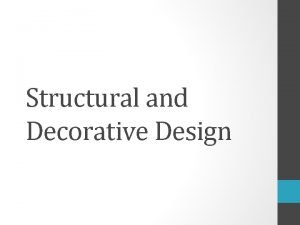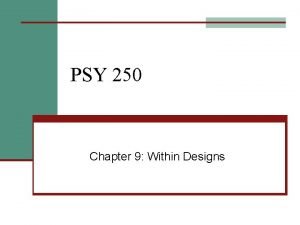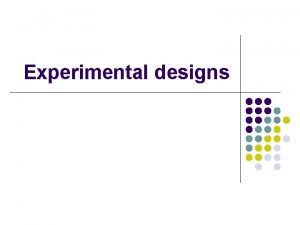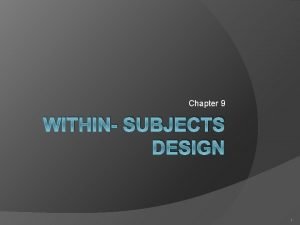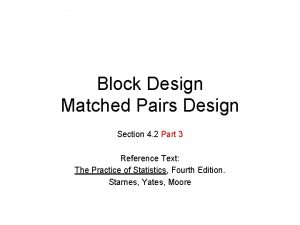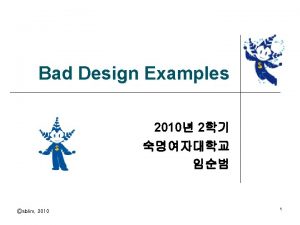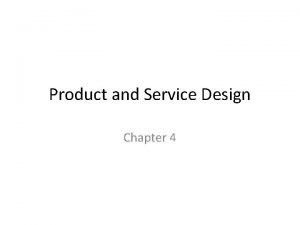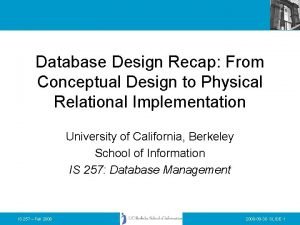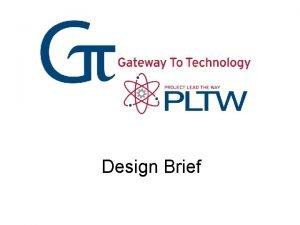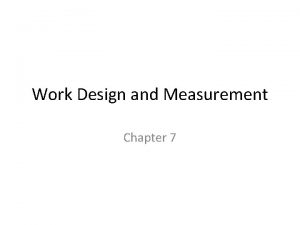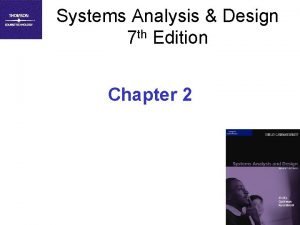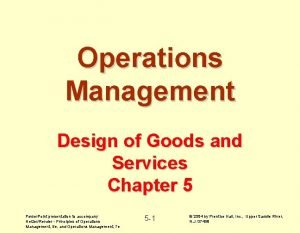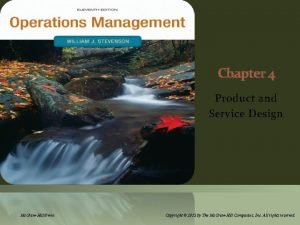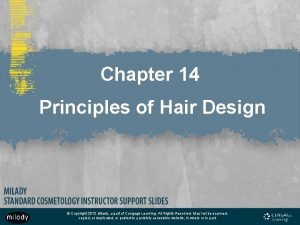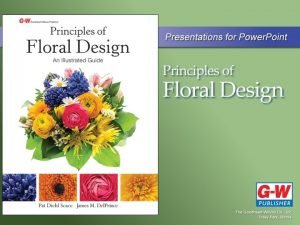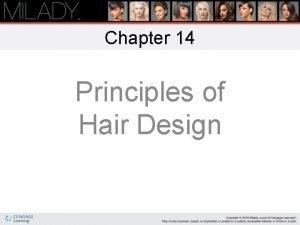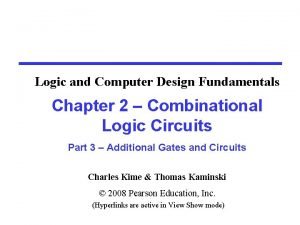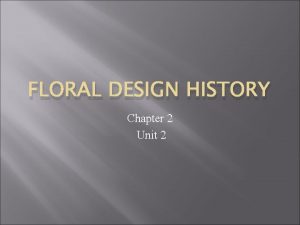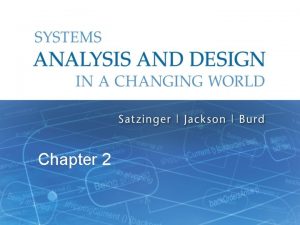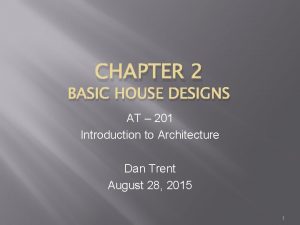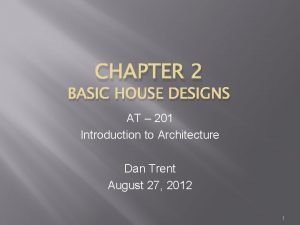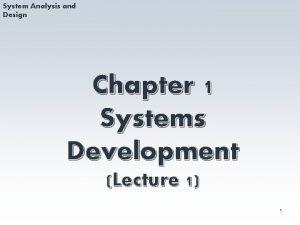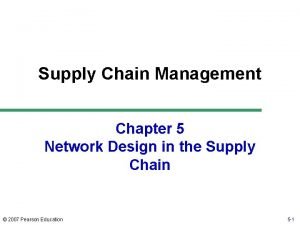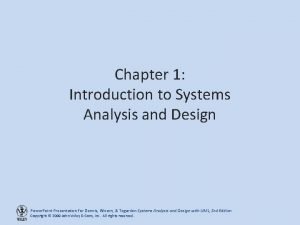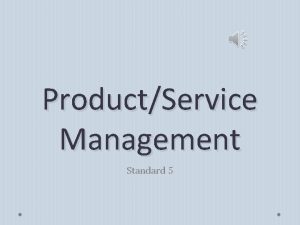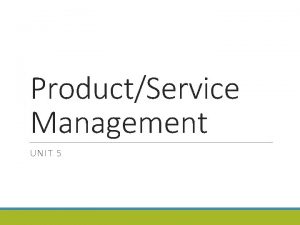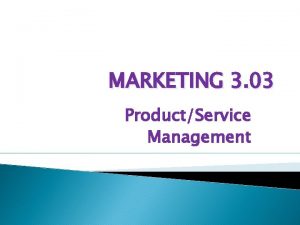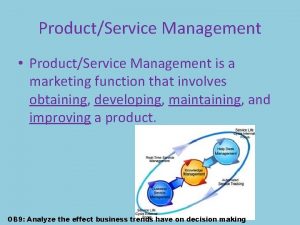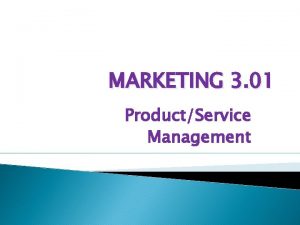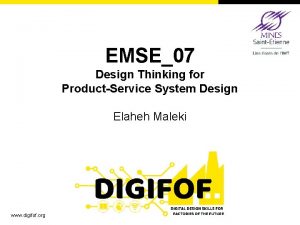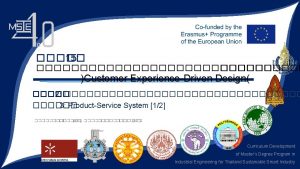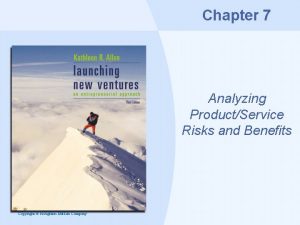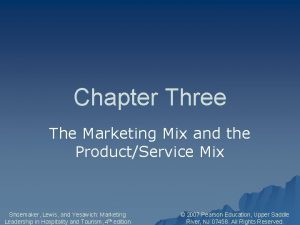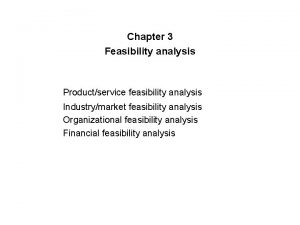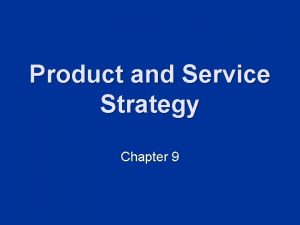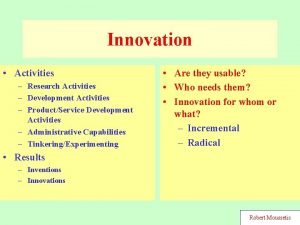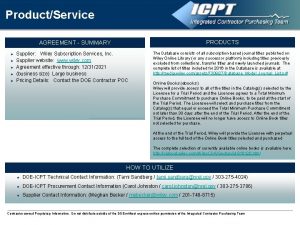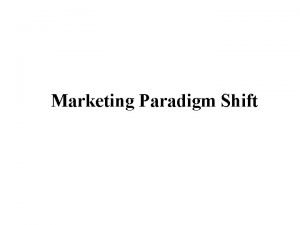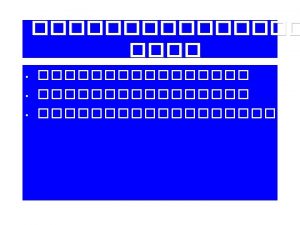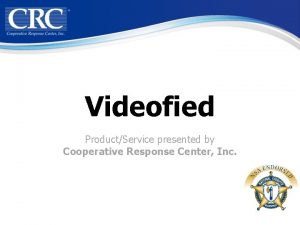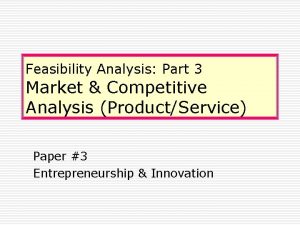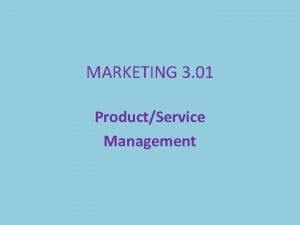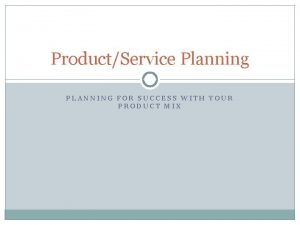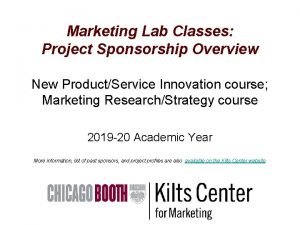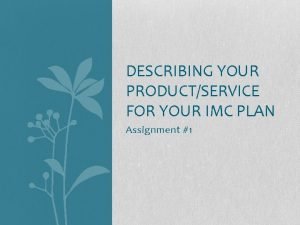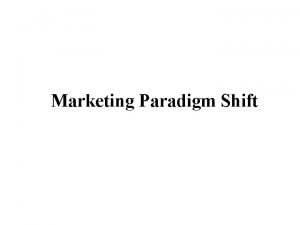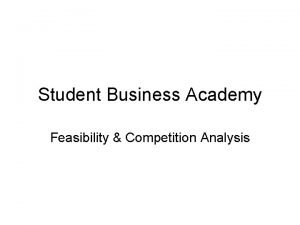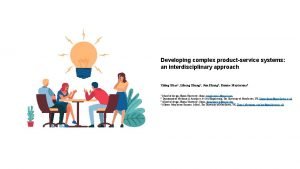Chapter 4 ProductService Design Chapter 4 ProductService Design



















































- Slides: 51

Chapter 4 Product/Service Design Chapter 4: Product/Service Design 1

Introduction Chapter 4: Product/Service Design 2

Progressive Corp. Prior to 1988, carved our profitable niche serving high-risk drivers l In 1988 two major events occurred l l Allstate overtook it in high-risk niche California passed proposition 103 Round-the-clock immediate response program adopted Chapter 4: Product/Service Design 3

Progressive Corp. continued Special vans equipped with airconditioning, comfortable chairs, desk, and two cell phones. l Often settlement check offered on spot l 80% of accident victims contacted within 9 hours of learning of accident l 70% of vehicles inspected within one day l Typically claim wrapped up with a week l Chapter 4: Product/Service Design 4

Thermos In 1992 had 25% share of $1 billion barbecue grill market l Product becoming a commodity l CEO believed consumers were too intelligent to be tricked by clever advertising and slick packaging l Survival dependent on constant innovation, high quality, at right price l Chapter 4: Product/Service Design 5

Thermos continued Interdisciplinary team with representatives from marketing, manufacturing, engineering, and finance to design new grill l Team used to reduce project completion time l As example, initially designers opted for tapered legs l Chapter 4: Product/Service Design 6

Thermos continued Manufacturing noted that tapered legs would have to be custom made l Design changed to straight legs l Under previous system, manufacturing would not have found out about legs until design completed l Chapter 4: Product/Service Design 7

Thermos continued Team developed revolutionary electric grill l Technology used to give food barbecued taste l Burns cleaner than gas or charcoal l Grill won four design awards in its first year l Chapter 4: Product/Service Design 8

Caterpillar Used virtual-reality system called CAVE (cave automatic virtual environment) to take large earthmoving equipment for test drive before it was actually built l Surround-screen and surround sound cube with 10 -foot sides l Super-computer projects 3 D graphics onto the walls l Chapter 4: Product/Service Design 9

Caterpillar continued Inside CAVE, people can walk around and operate imaginary controls l System responds to movements l Provides many perspectives l Backhoe and wheel loader recently introduced incorporate visibility and performance improvements based on data collected from virtual test-drives l Chapter 4: Product/Service Design 10

Themes Illustrate in Examples Two examples related to design of products and one to the design of a service l Importance of product and service design to an organization’s competitiveness l l l Progressive Thermos Chapter 4: Product/Service Design 11

Themes continued l Technology l l l In Progressive’s case, new technology such as cellular phones made new service possible In Caterpillar’s case, new technology used to enhance design process Design Teams Chapter 4: Product/Service Design 12

Impacts of Selection/Design Decisions Fit l Materials l Labor l Equipment l Process l Financing l Chapter 4: Product/Service Design 13

Three Stages in Output Selection and Design l Selection stage l l l Product and service design stage l l Idea generation Screening and selection Preliminary design Prototype testing Final design Process design Chapter 4: Product/Service Design 14

Steps in Product-Service Selection and Design Chapter 4: Product/Service Design 15

The Selection Stage Chapter 4: Product/Service Design 16

Generation of Ideas Employees with customer contact play a key role in generating new ideas l Can imitate proven new idea l Purchase new idea l Marketing “pull” versus technology “push” l Product versus process research l Chapter 4: Product/Service Design 17

The Development Effort Chapter 4: Product/Service Design 18

Mortality Curve of Chemical Product Ideas from Research to Commercialization Chapter 4: Product/Service Design 19

Service Gap Identifier 20

Product-Process Innovations Over Time Chapter 4: Product/Service Design 21

Screening and Selection l l l Assessing technical feasibility Determining up-front capital needs Evaluation may include calculation of payback period, return on investment, or net present value Chapter 4: Product/Service Design 22

Analysis of Organizational Fit Experience with particular output l Experience with production system required for the output l Experience in providing an output to the same target recipients l Experience with the distribution system for the output l Chapter 4: Product/Service Design 23

Typical Checklist for Organizational Fit Chapter 4: Product/Service Design 24

The Aggregate Project Plan l Project Portfolio l l Derivative projects Breakthrough projects Platform projects R&D projects Chapter 4: Product/Service Design 25

The Aggregate Project Plan Chapter 4: Product/Service Design 26

An Example Aggregate Project Plan Chapter 4: Product/Service Design 27

Using the Aggregate Project Plan Identify gaps in portfolio l Evaluate resource requirements l Employee development l Chapter 4: Product/Service Design 28

The Product/Service Design Stage Chapter 4: Product/Service Design 29

The Product Design Stage Preliminary Design l Prototype Testing l Final Design l Chapter 4: Product/Service Design 30

Preliminary Design Tradeoff Analysis l Standardization l Modularity l Computer-Aided Design l Chapter 4: Product/Service Design 31

Tradeoff Analysis Factors to Consider l l l Function Cost Size and shape Appearance Quality Reliability l l l Environmental impact Producability Timing Accessibility Recipient input requirements Chapter 4: Product/Service Design 32

Using QFD to link customers’ attributes to technical, component, and operation requirements Chapter 4: Product/Service Design 33

The House of Quality for a Car Door Chapter 4: Product/Service Design 34

Advantages of Standardization Minimizes number of parts needed to stock l Minimizes number of equipment setups l Simplified operations procedures l Quantity discounts due to larger purchases l Minimized service and repair problems l Chapter 4: Product/Service Design 35

Disadvantages of Standardization Possible lower quality because standard parts used rather than specially made parts l Inflexible production l Chapter 4: Product/Service Design 36

Modularity computer 5 hard drive sizes 5 choices for RAM 5 choices for CPU 4 modem choices 5 x 5 x 4 = 500 possible computer configurations with only 19 different parts Chapter 4: Product/Service Design 37

Computer-Aided Design Develop drawings on computer screen l Can retrieve old designs and changes as necessary rather than creating new designs from scratch l Computer-aided engineering (CAE) l Computer-aided process planning (CAPP) l Computer-aided manufacturing (CAM) l Chapter 4: Product/Service Design 38

Prototype Testing Design concept developed in preliminary stage tested l Physical models l Computer simulation l Rapid prototyping (RP) l Actual product or service l Accept, extend, modify, or reject preliminary design l Chapter 4: Product/Service Design 39

Final Design Simplification and value analysis l Safety and human factors l Reliability l Manufacturability l Chapter 4: Product/Service Design 40

Methods to Speed New Output Introduction Contract R&D l Product/process teams l Overlap development stages l Combine/eliminate stages l Incremental emphasis l More extensive application l Use new technologies l Chapter 4: Product/Service Design 41

Commercialization Chapter 4: Product/Service Design 42

Commercialization Process of moving an idea for a new product or service from concept to market Chapter 4: Product/Service Design 43

History of the Typewriter Mechanical typewriter dominated market for 25 years l Then the electromechanical typewriter dominated market for 15 years l Electric typewriter dominated for the next 7 years l First generation microprocessor based machines dominated for next 5 years l Chapter 4: Product/Service Design 44

Characteristics of Companies with Superior Commercialization Capabilities Commercialize two to three times as many new products and processes as their competitors l Two to three times as many technologies incorporated into products l Get product to market in half time l Compete in twice as many product and geographic markets l Chapter 4: Product/Service Design 45

Example: Assume following applies to laser printer industry Market growing 20% annually l Prices declining 12% annually l Five year life cycle As a project leader, would you choose between incurring a 30% cost overrun to finish project on schedule or miss deadline by six months? l Chapter 4: Product/Service Design 46

Laser Printer example continued Incurring the 30% cost overrun will reduce cumulative profits by 2. 3% l Launching printer six months late will reduce cumulative profits by 33% l Chapter 4: Product/Service Design 47

To Improve Commercialization Capability Must Measure It Time to market l Range of markets l Number of markets l Breadth of technologies l Chapter 4: Product/Service Design 48

Improving Commercialization Capability Make it a priority l Set goals and benchmarks l Build cross-functional teams l Promote hands-on management to speed actions and decisions l Chapter 4: Product/Service Design 49

Disruptive Technologies Disruptive technologies l Sustaining technologies l Chapter 4: Product/Service Design 50

Performance Trajectories: Traditional Versus Online Distance Education Learning Programs Chapter 4: Product/Service Design 51
 Vce viscom study design
Vce viscom study design Input and output form design
Input and output form design Structural and decorative design in fashion
Structural and decorative design in fashion Classification of decorative design
Classification of decorative design Within participants design
Within participants design Split range
Split range Within subject design vs between subject design
Within subject design vs between subject design Within group design
Within group design Matched pair design vs block design
Matched pair design vs block design User interface design in system analysis and design
User interface design in system analysis and design Randomized block design vs matched pairs
Randomized block design vs matched pairs Elements and principles of design ppt
Elements and principles of design ppt Bad designs examples
Bad designs examples Repeated measures design
Repeated measures design Dialogue design in system analysis and design
Dialogue design in system analysis and design Roman floral design history
Roman floral design history Delayed differentiation and modular design
Delayed differentiation and modular design Libidau
Libidau Design brief deliverables
Design brief deliverables Chapter 7 work design and measurement
Chapter 7 work design and measurement System analysis and design chapter 2
System analysis and design chapter 2 Design of goods and services in operations management
Design of goods and services in operations management Chapter 4 product and service design pdf
Chapter 4 product and service design pdf Chapter 14 milady
Chapter 14 milady Vegetative floral design
Vegetative floral design Instrument in research example
Instrument in research example Refers to directional wave patterns
Refers to directional wave patterns Chapter 8 design
Chapter 8 design Chapter 2 design
Chapter 2 design English georgian floral arrangements
English georgian floral arrangements Five basic welding joints
Five basic welding joints System analysis and design chapter 2
System analysis and design chapter 2 Chapter 2 basic house design answers
Chapter 2 basic house design answers Chapter 2 basic house design answers
Chapter 2 basic house design answers System analysis and design chapter 1
System analysis and design chapter 1 Facility role in network design
Facility role in network design System analysis and design chapter 1
System analysis and design chapter 1 Summary of the red tent
Summary of the red tent The great gatsby ch 8 summary
The great gatsby ch 8 summary Chapter 10 chemical reactions
Chapter 10 chemical reactions Chapter 11 stoichiometry test
Chapter 11 stoichiometry test Chapter 9 chemical reactions
Chapter 9 chemical reactions Chapter 7 similarity chapter test form a answer key
Chapter 7 similarity chapter test form a answer key Chapter 6 career readiness review
Chapter 6 career readiness review 7 ionic and metallic bonding
7 ionic and metallic bonding Chapter 9 surface water chapter assessment answer key
Chapter 9 surface water chapter assessment answer key Chapter 2 representing motion
Chapter 2 representing motion Chemistry: the central science chapter 14 answers
Chemistry: the central science chapter 14 answers Chapter 7 ionic and metallic bonding assessment answer key
Chapter 7 ionic and metallic bonding assessment answer key Chapter 4 section 1 population dynamics answer key
Chapter 4 section 1 population dynamics answer key Chapter 2 standardized test practice answers
Chapter 2 standardized test practice answers Introduction to the book of philippians
Introduction to the book of philippians



